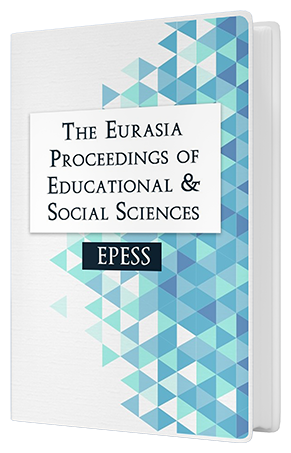AN EDUCATIONAL APPLICATION OF 3D PRINTING TECHNIQUE USED FOR INSOLE PRODUCTION
Keywords:
Insole design, scientific education, 3D printerAbstract
In this study, it was implemented a biomechanical application of 3D printing technique for insole production. Basically, in terms of the arch height, there are three foot types including high, normal and flat arch. Moreover, if the alignment of the foot is taken into account, foot types can be classified as neutral, supinated and pronated foot. Each foot class has different shape and foot size. An insole is a device that is placed into the shoes to provide comfort and to correct the alignment of the lower limbs. Design of the insoles could be implemented according to specific foot geometry of subjects. These kinds of insoles are called generally as customized insole and have total-contact characteristics. Total-contact insoles are effective in reducing pain as distributing the pressure and improving the foot function. To produce a total-contact insole, the geometric data of foot plate surface should be known. In order to carry out this task, molding process is widely performed. Advances in scanning technology enable insole designers to obtain 3D CAD (three-dimensional computer-aided-design) model which represents the shape and dimensional data of an object. The model, namely, solid model could be imported to various commercial or educational software and be modified for special purposes. Therefore, molding process is discarded and molding cost is prevented with the method of 3D scan. Many 3D scan devices exist to obtain 3D data that may require high cost for an insole device. Thus, people even not having engineering background could obtain 3D foot model using various free available image capturing programs integrated in a mobile phone. In this educational application, it is aimed to manufacture a customized full-contact insole by means of a 3D printer and a 3D scan mobile application. The scanning software, which combines the photos of the object captured from the different angles, was used to obtain 3D CAD data of the geometrical shape of the foot in this study. Then, the data was imported as a model to a CAD software and modified for a subject shoe. Next, the model was converted into STL file format and imported to a 3D printer device. Finally, the solid model of the insole was printed and placed into the shoe. By taking advantage of new facilities of technological improvements, subject specific insoles could be designed and manufactured. These kinds of educational applications regarding 3D scanning and printing technologies have the potential to increase the prevalence of use of custom made biomechanical instruments which are developed to increase the quality of daily life of human being.Downloads
Published
Issue
Section
License
Copyright (c) 2016 The Eurasia Proceedings of Educational and Social Sciences

This work is licensed under a Creative Commons Attribution-NonCommercial-ShareAlike 4.0 International License.
The articles may be used for research, teaching, and private study purposes. Any substantial or systematic reproduction, redistribution, reselling, loan, sub-licensing, systematic supply, or distribution in any form to anyone is expressly forbidden. Authors alone are responsible for the contents of their articles. The journal owns the copyright of the articles. The publisher shall not be liable for any loss, actions, claims, proceedings, demand, or costs or damages whatsoever or howsoever caused arising directly or indirectly in connection with or arising out of the use of the research material. All authors are requested to disclose any actual or potential conflict of interest including any financial, personal or other relationships with other people or organizations regarding the submitted work.




